|
|
|||||
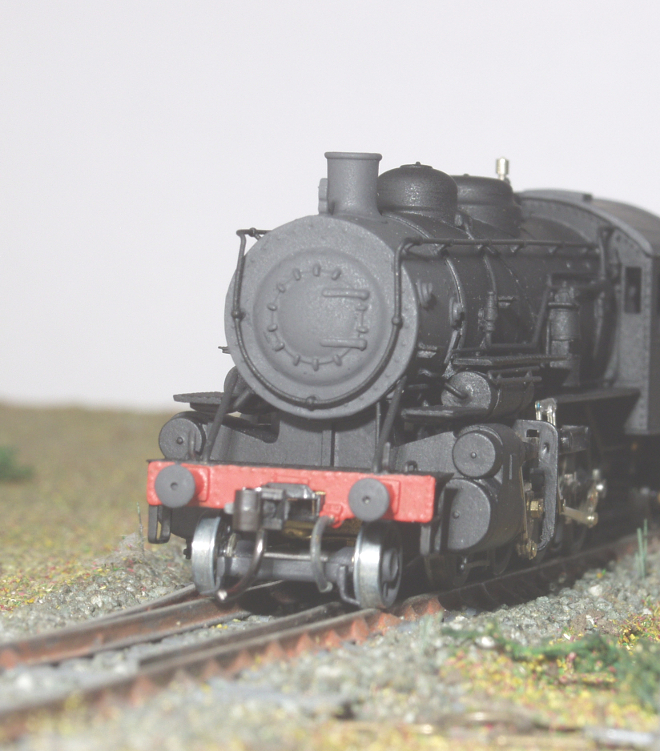
Baldwin build 'Pershing class for British Army in WW1 (scale 1/87), 16.5mm HO gauge from DJH Model Loco kit. Model featured in Continental Modeller magazine. The Model Locomotive As Historical Document There's a certain thrill that comes of being asked to produce a model of a locomotive or item of rolling stock that will represent a prototype at a particular moment in time. It may be to recapture a moment of youth, when you saw the real thing passing by from the lineside. Or perhaps a model is commissioned to act as a 3D 'photograph' of something that has long since been scrapped - or even, never actually made it off the designer's drawing board. Take one of Bullied's 'austerity' 0-6-4 tanks proposed for the Southern, and staying within that part of the country, what about Dougald Drummond's shadowy 4-cyl 0-8-0 tender engine for the LSWR? Though certainly possible to re-create as a series of graphical renderings in the virtual world, how much nicer - and impressive - either might well be as a physical model in the real one! 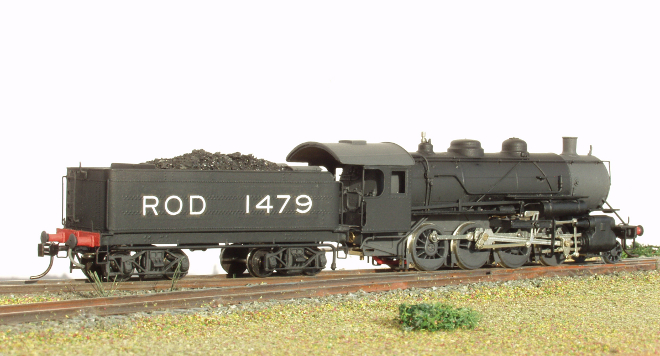
RH side of model. Built from a DJH kit, which itself is for the later American expeditionary forces engines, the model features removal of the kit's outside steam pipes, and an revised arrangement of front footboards. 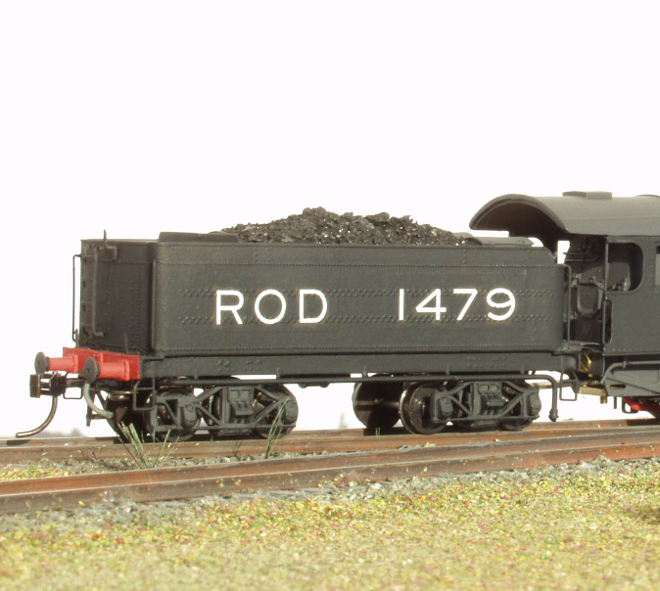
1479's Tender in more detail. The transfers are a custom set - as in common with all the ROD series of models I have been asked to build - and were designed in-house. The coal load is separate, and is dropped in as a unit after final painting and finishing. Bogie bolsters have been modified to provide 3-point suspension, to much reduce any tendancy for the tender to 'rock' whilst in motion. 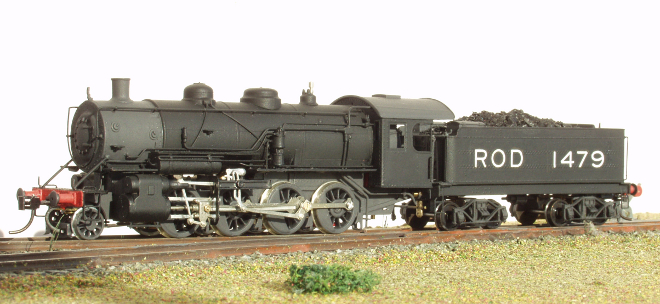
LH side of completed engine. Apart from the low-profile European cab and buffers, this could quite easily be mistaken for a 'standard' Baldwin turn-of-the-century consolidation. What you cannot see, are the new wiper pickups that make the engine, a self-contained electrical unit, and which does away with the wire connection between loco and tender needed for the DJH 'American' current collection system. 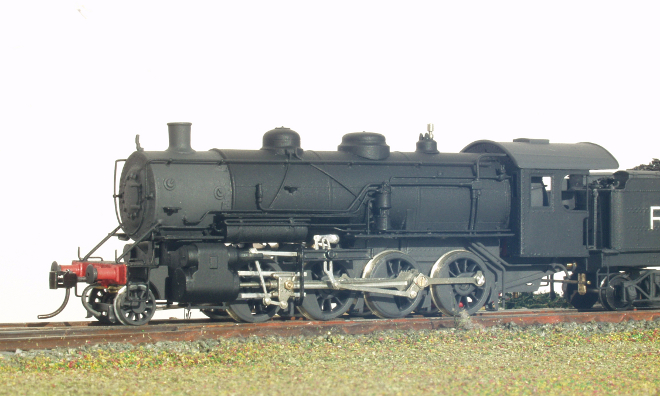
Close up of the locomotive and in particular the valve gear. The expansion link carrier and associated etched rodding are arranged to be removable for servicing, as is the cylinder block, should the model's mechanism ever need attention. For the record, none of the British army engines survive, but several of the American built superheated engines are still in existance, even one in apparently operating condition in Romania of all places! (Note the poppy in front of the rearmost set of driving wheels...or is it just a bit of fluff? 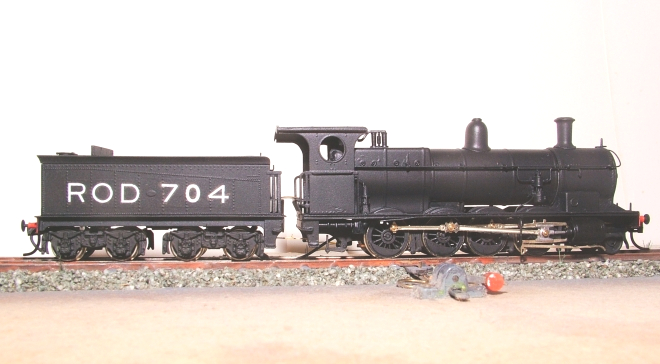
NSWGR D50 from DJH ModelLoco produced in conjunction with AR Models of Australia (scale 1/87), 16.5mm gauge. Again, another in the Railway Operating Department series, and one that needed to have its motor repositioned to drive upon the 3rd rather than the 2nd axle, so as to give both the desired amount of 'daylight' under the boiler - and provide more straightforward separation of superstructure from chassis. Also one that appeared in the pages of Continental Modeller magazine. 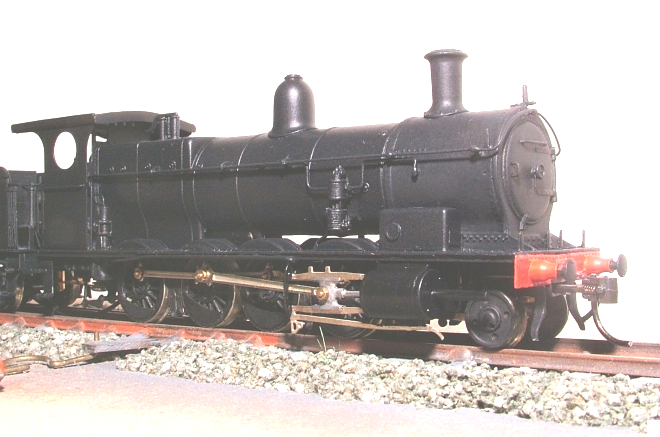
Comparing the contents of the kit - which depicts the later 1950s condition engines - and a works photo of the class 'as built', the 'backdating' turned into quite a big job. A full set of pipework for the Westinghouse pump needed to be made for the model, and along the way I landed myself the job of making a miniature Wier feed pump as well. Not to mention numerous little pipe clips from shim brass, each one less than a millimetre wide.... 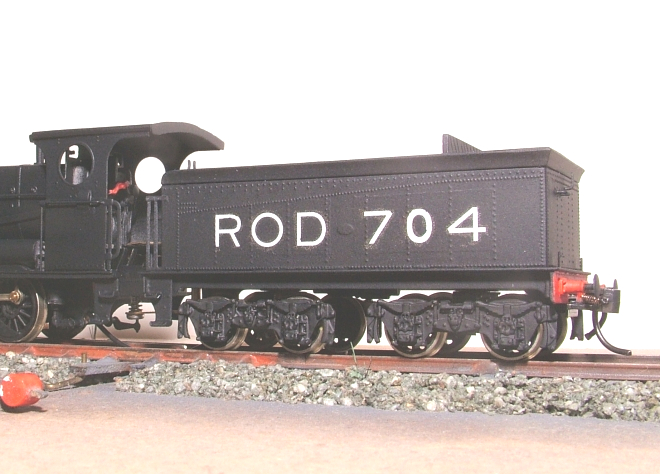
As with all my models, couplings are fixed with a screw to a soldered-in mounting plate. Kadees are fussier than most in that they need to be set at just the right height to clear both uncoupling ramps and pointwork. On English and European prototypes, you need also to allow for the inevitable 'droop' that occurs the further the knuckle projects so as to allow clearance on curves.
|